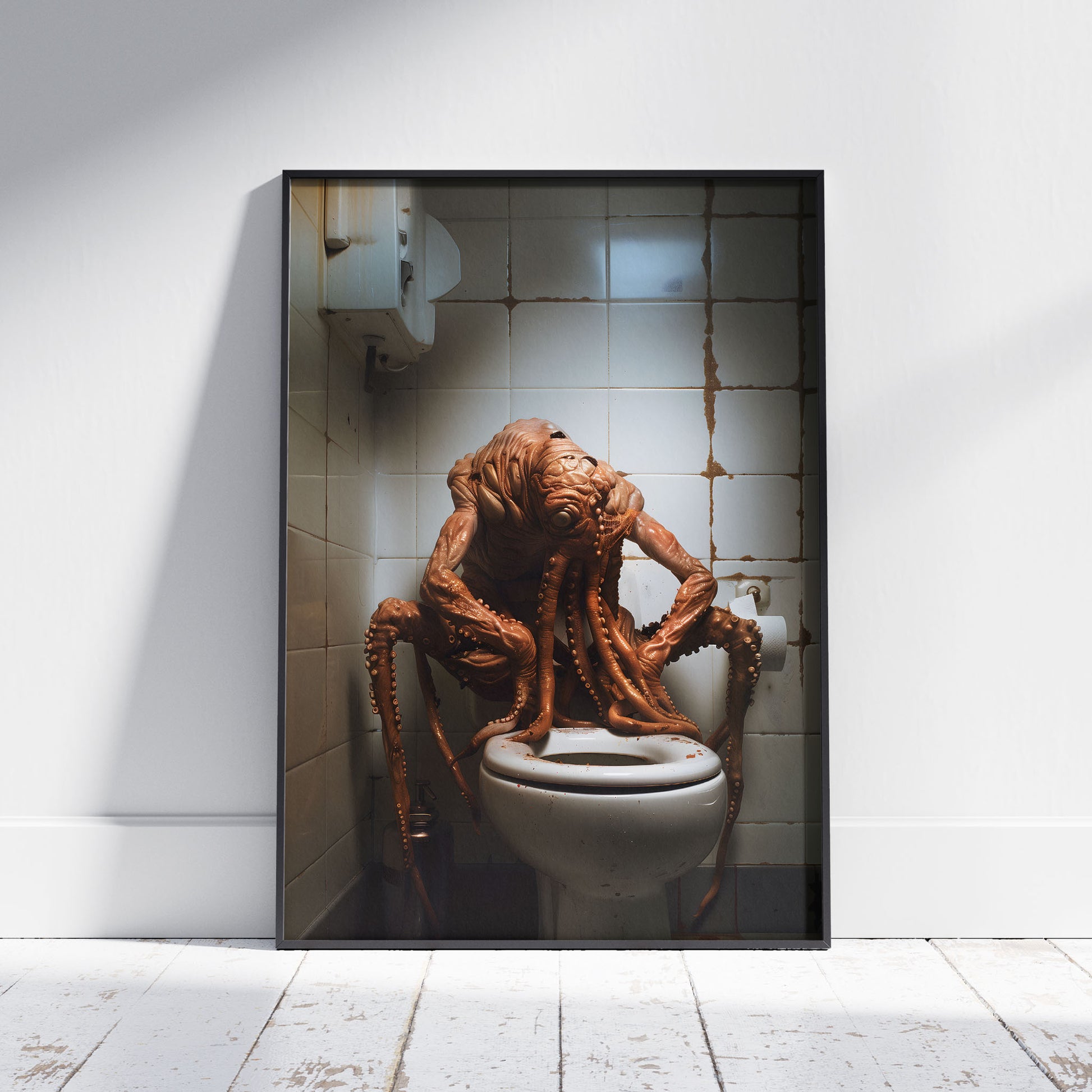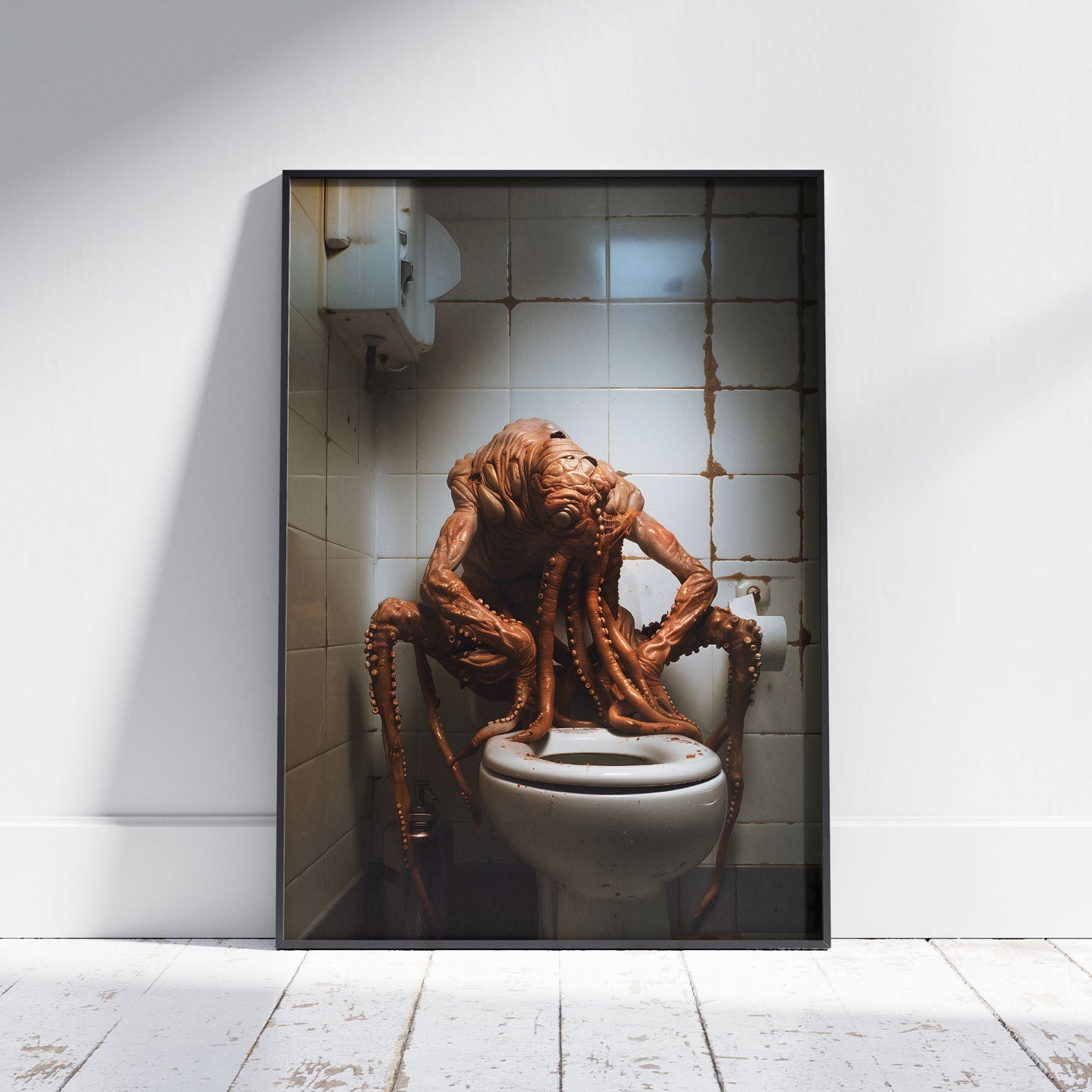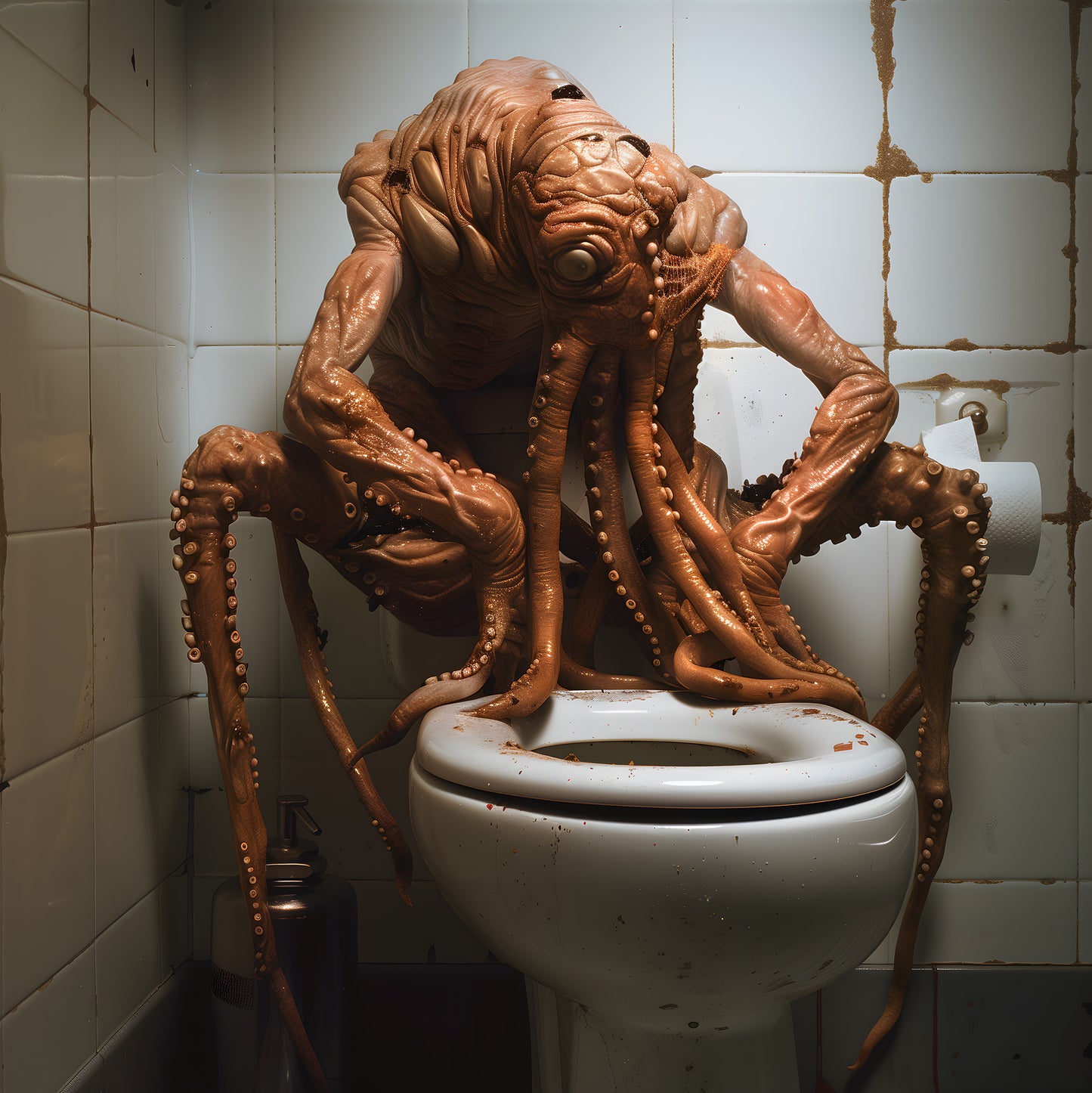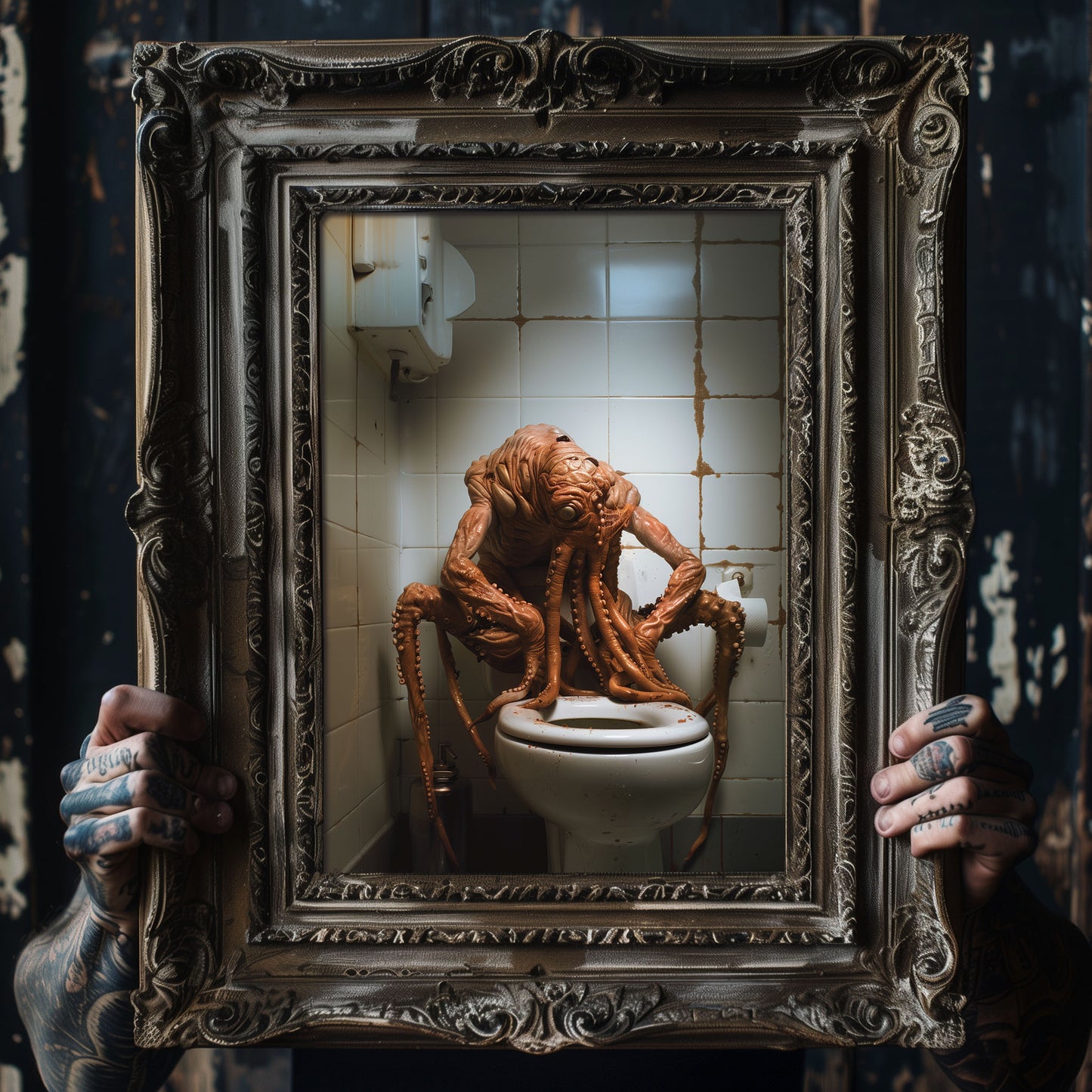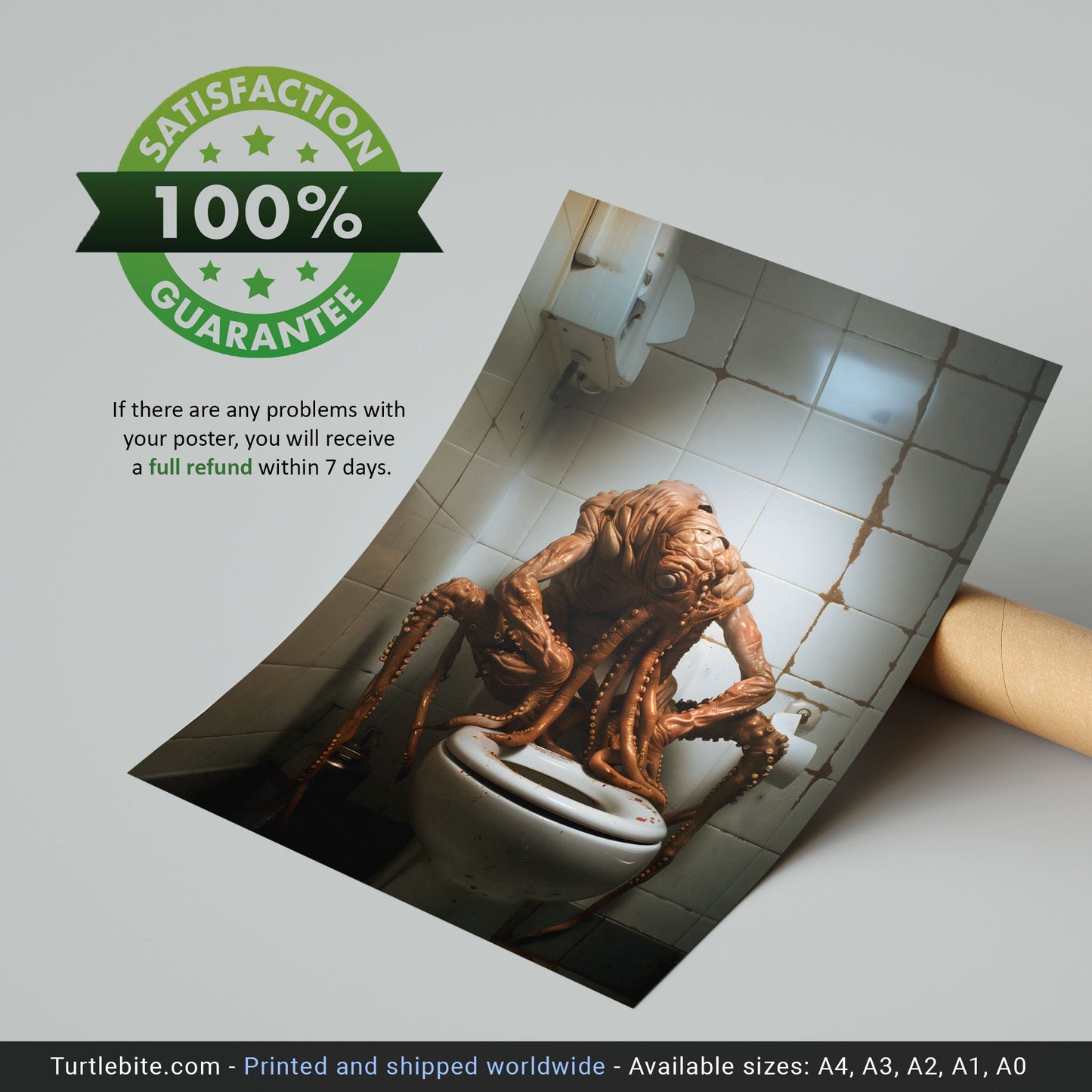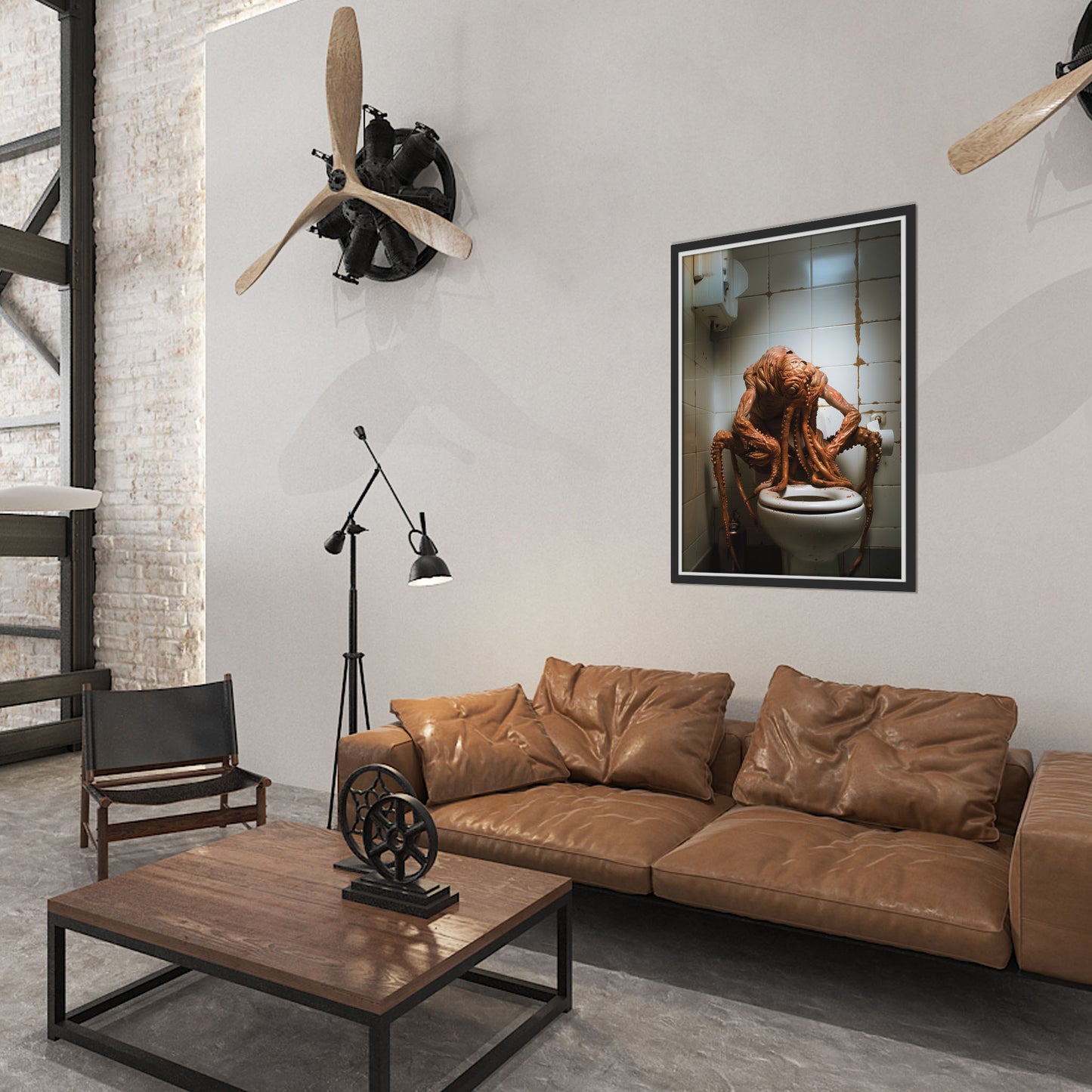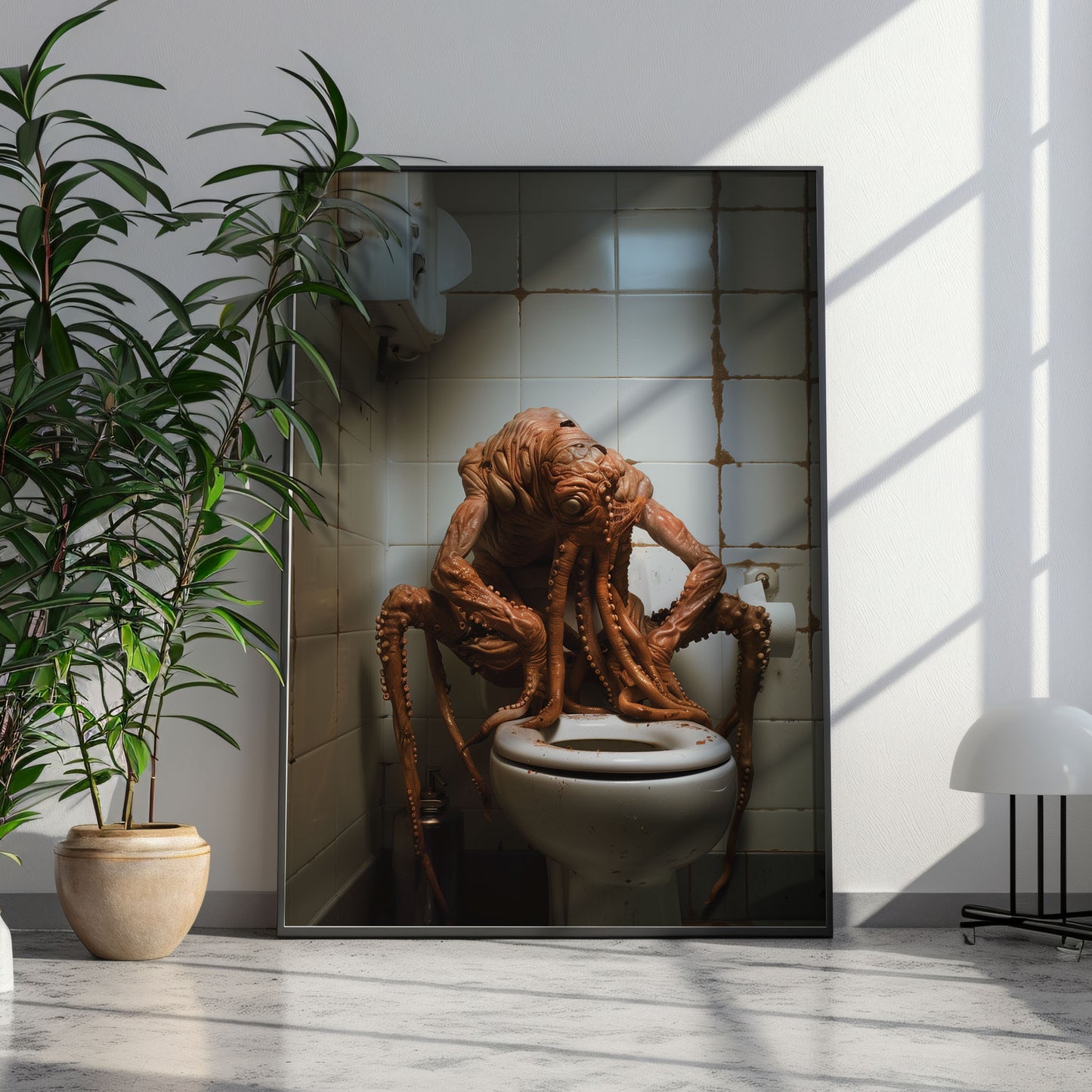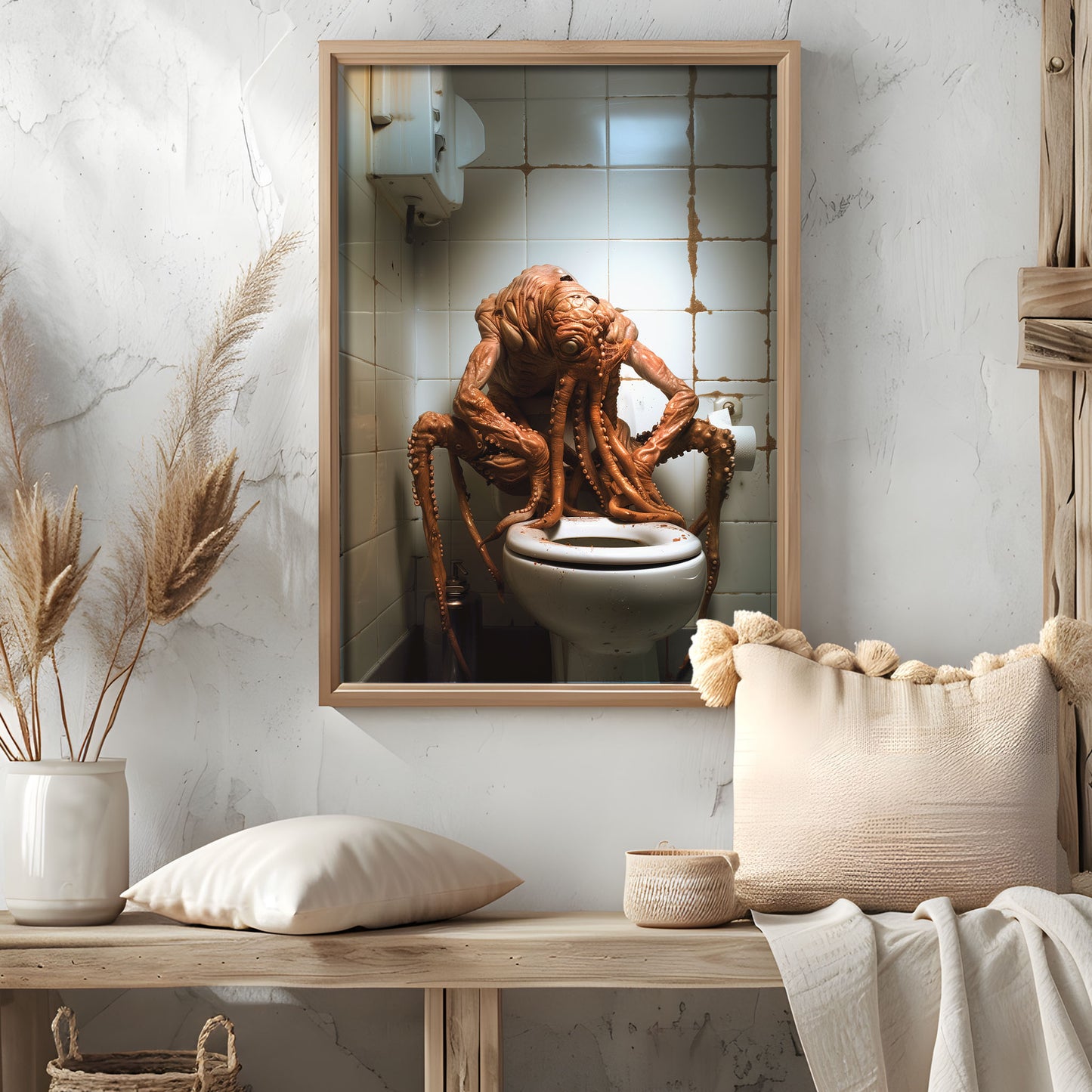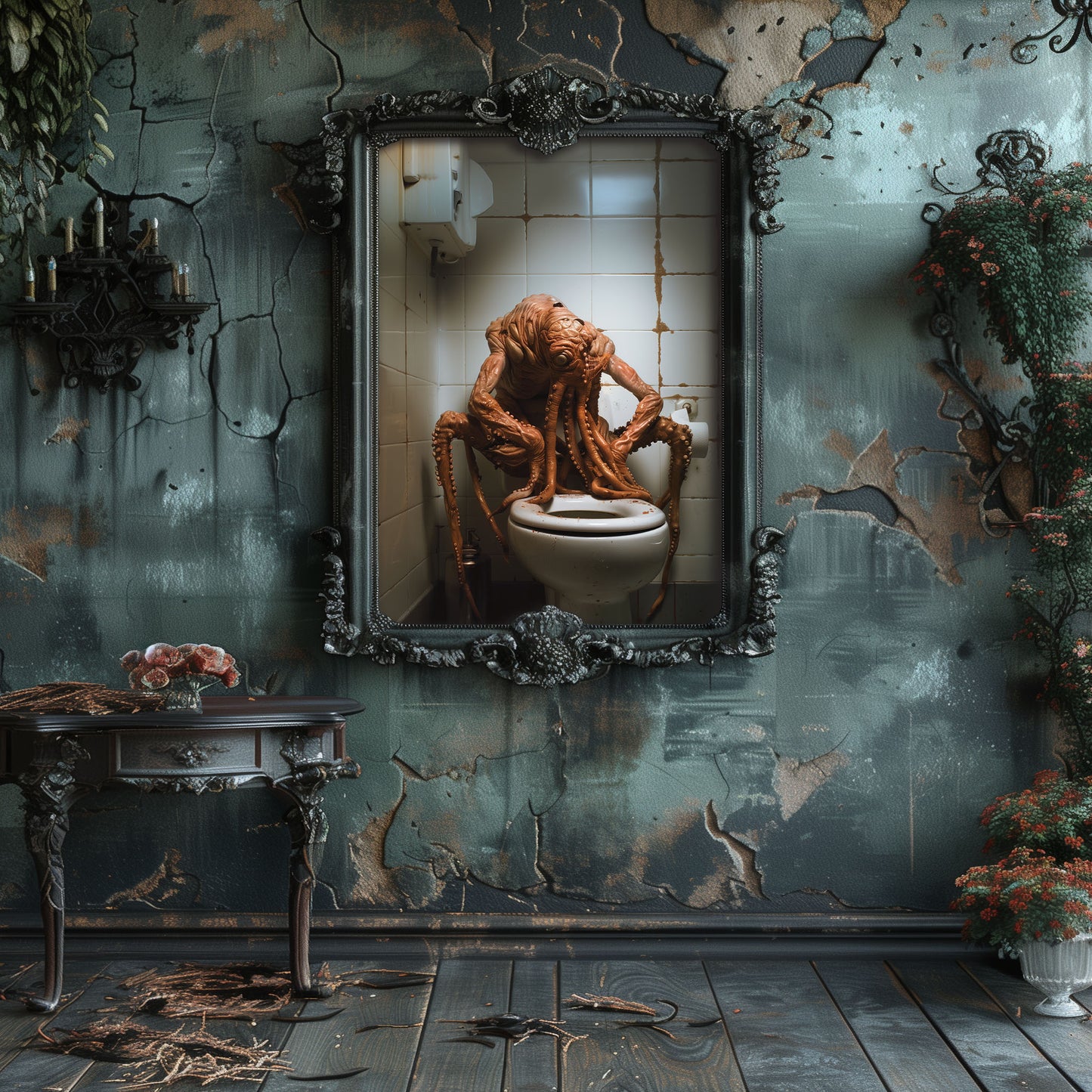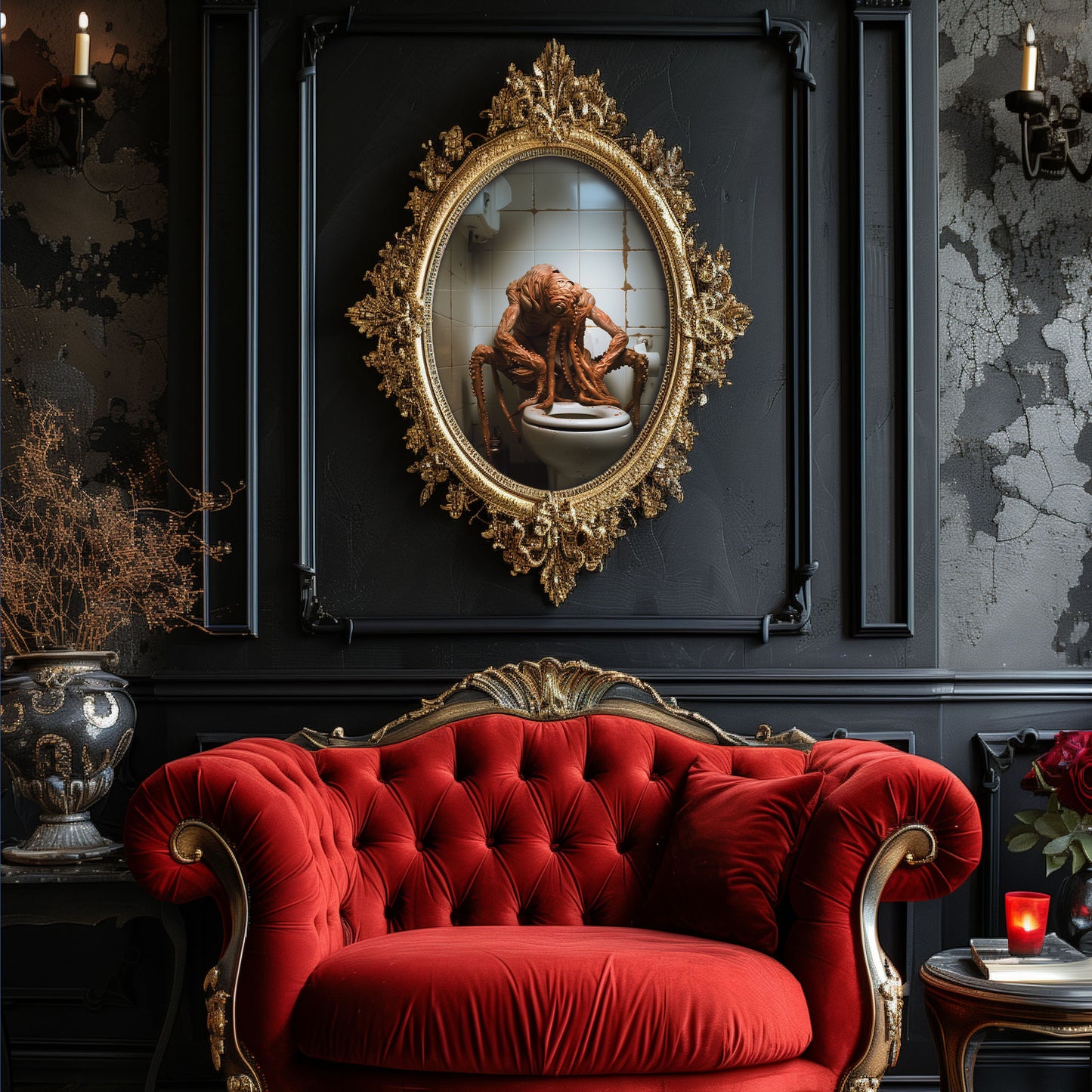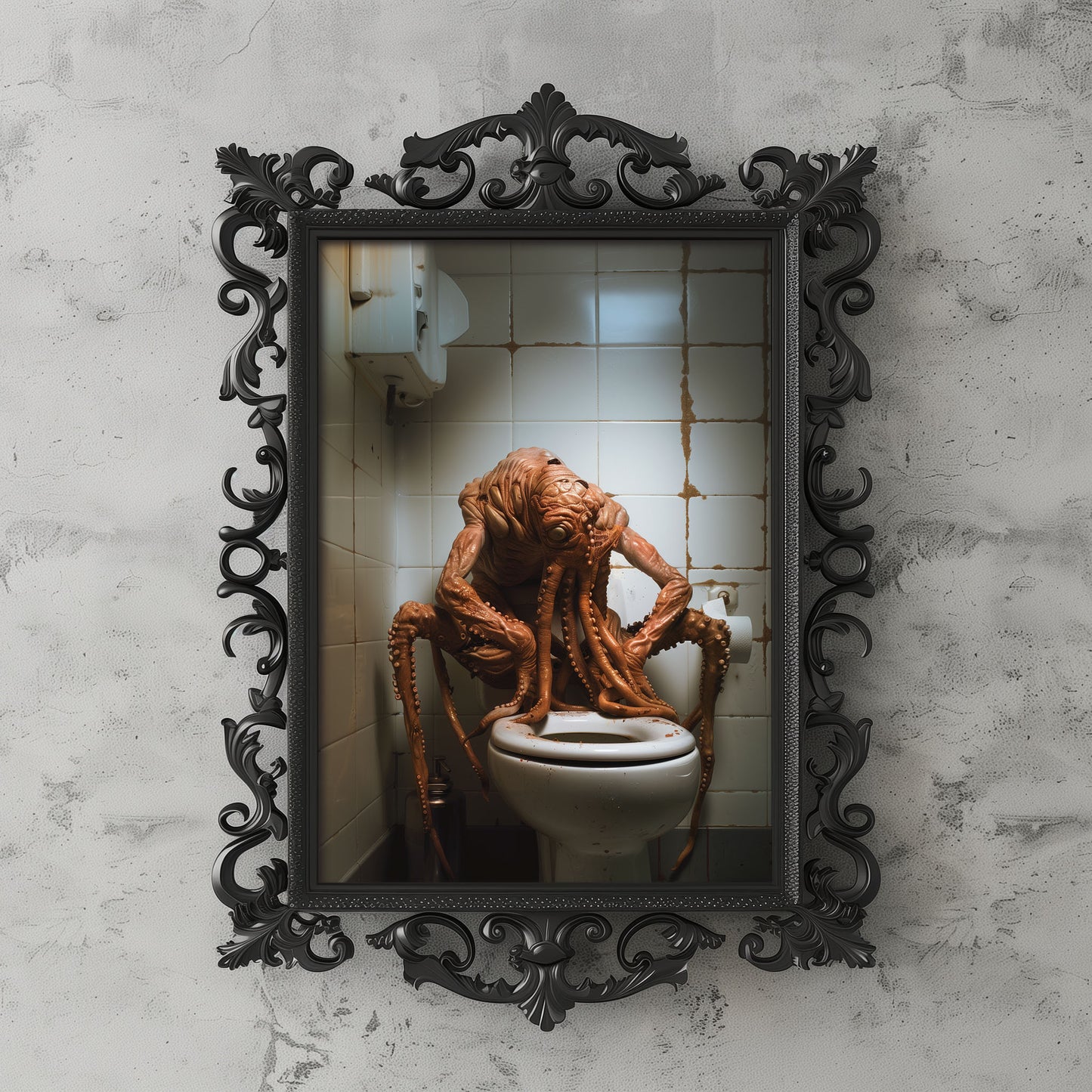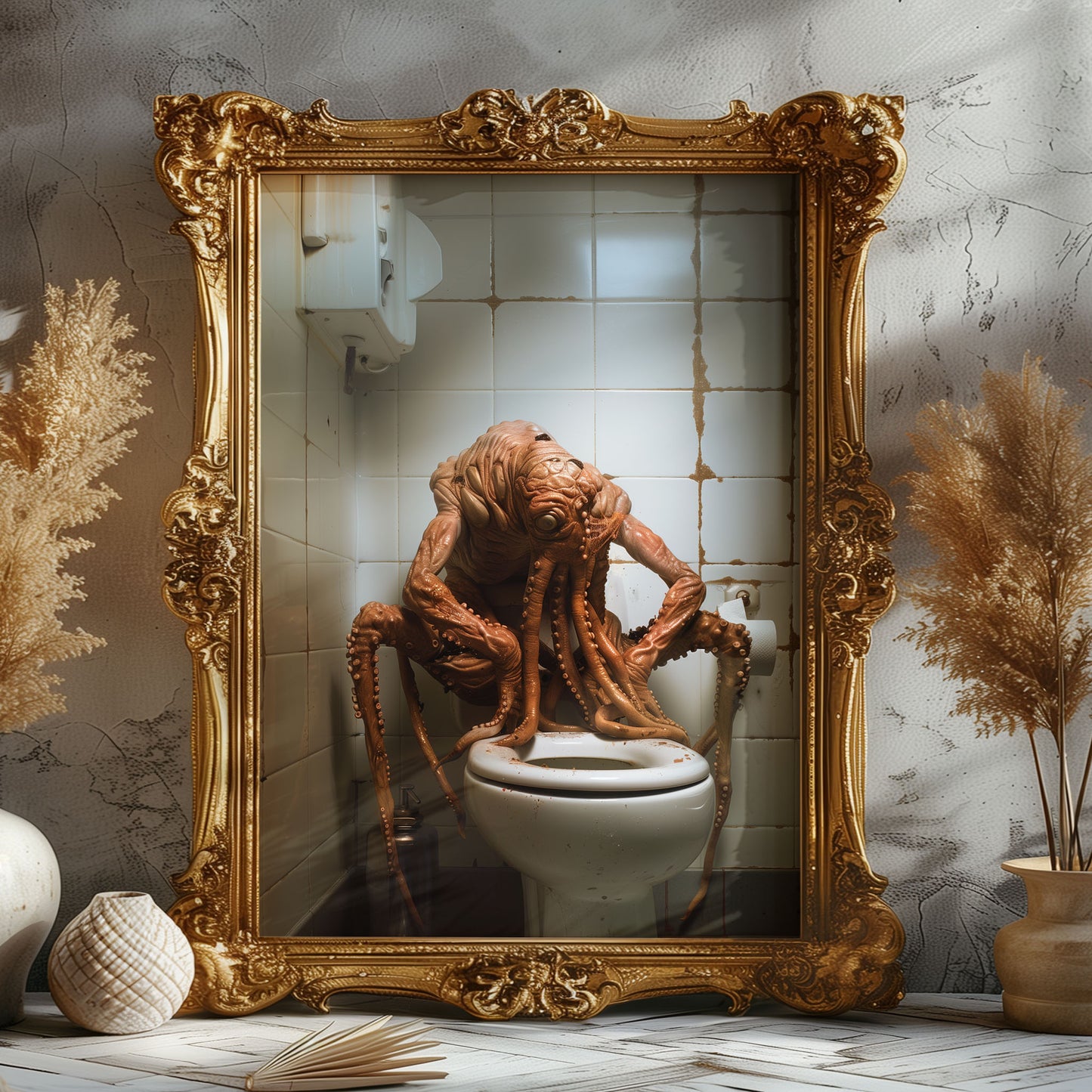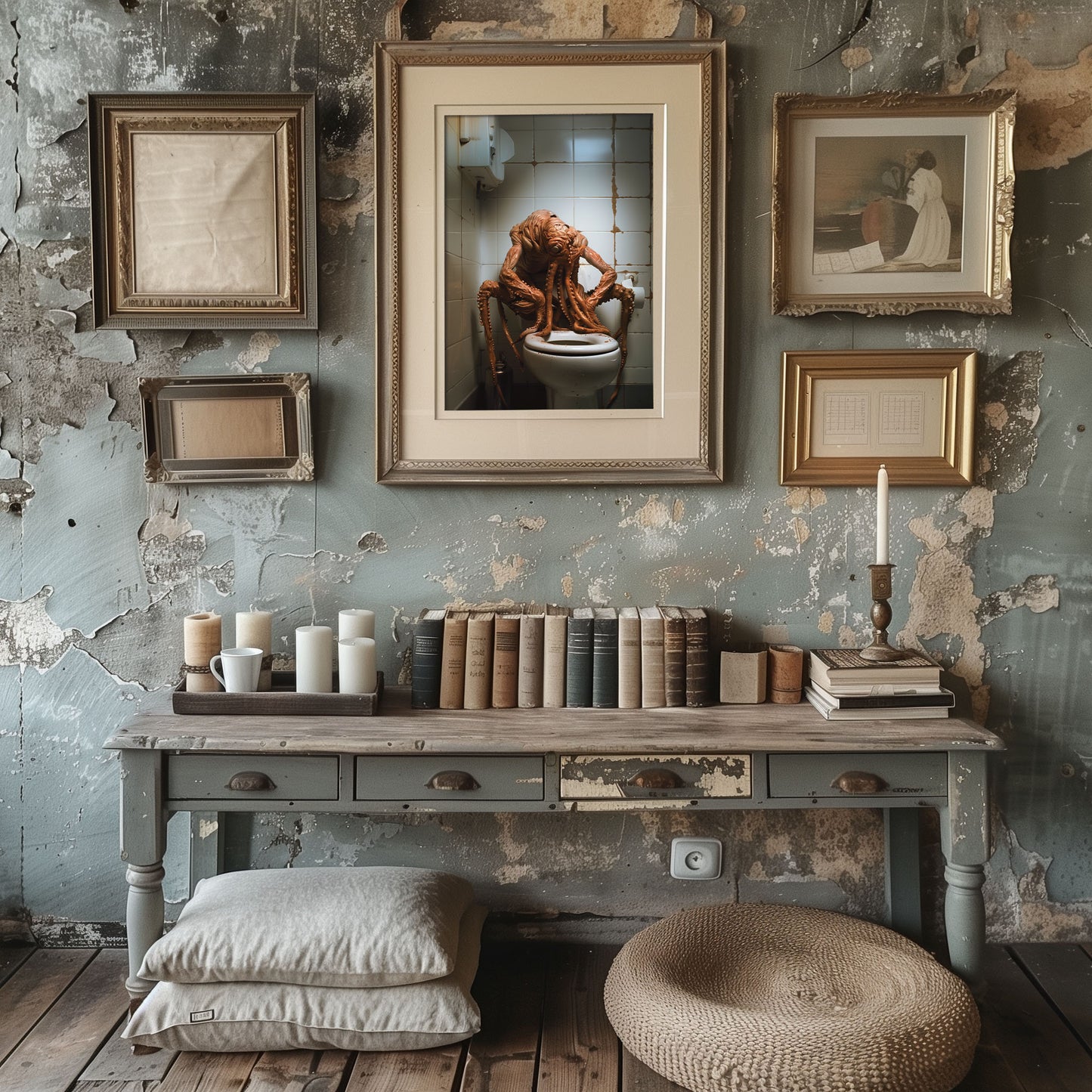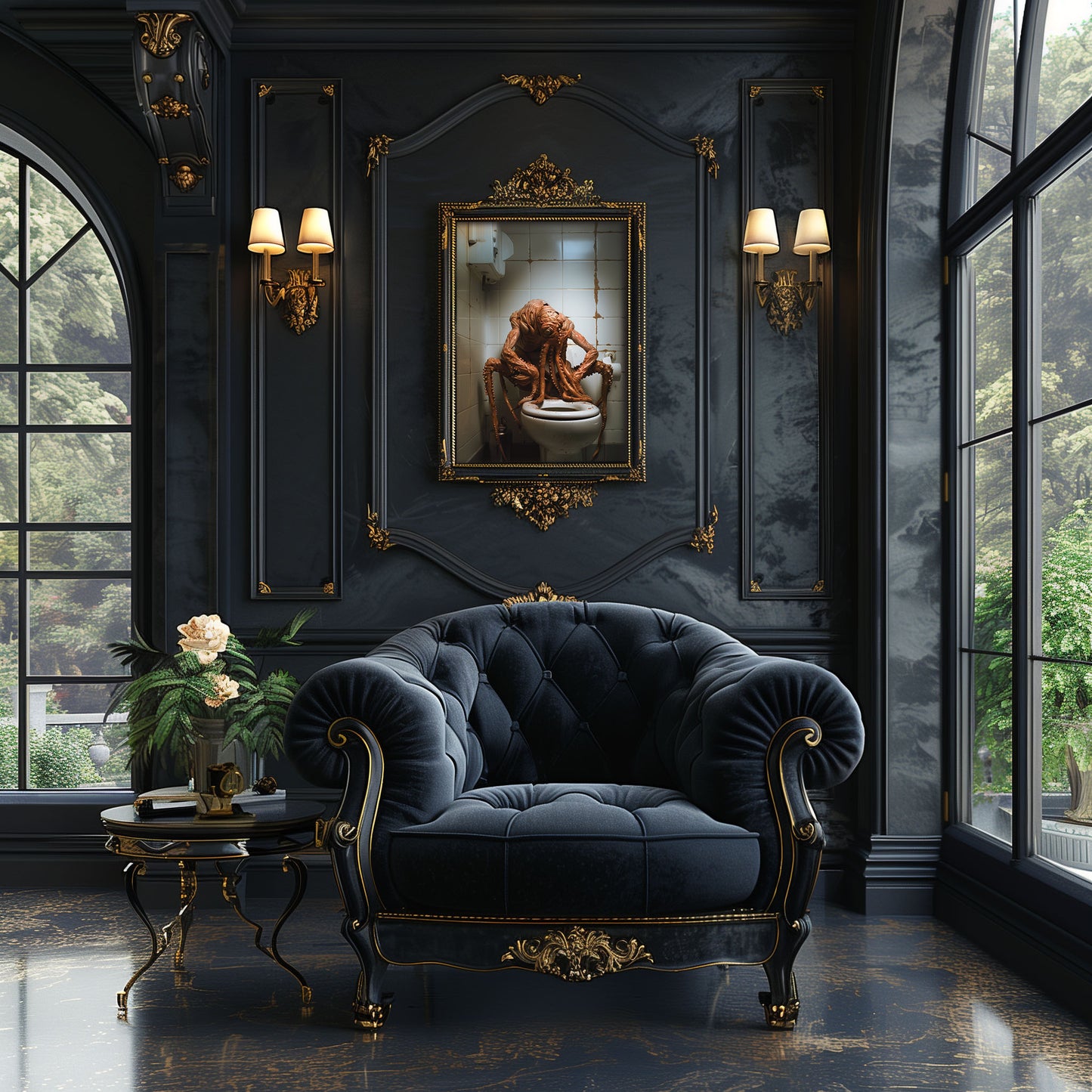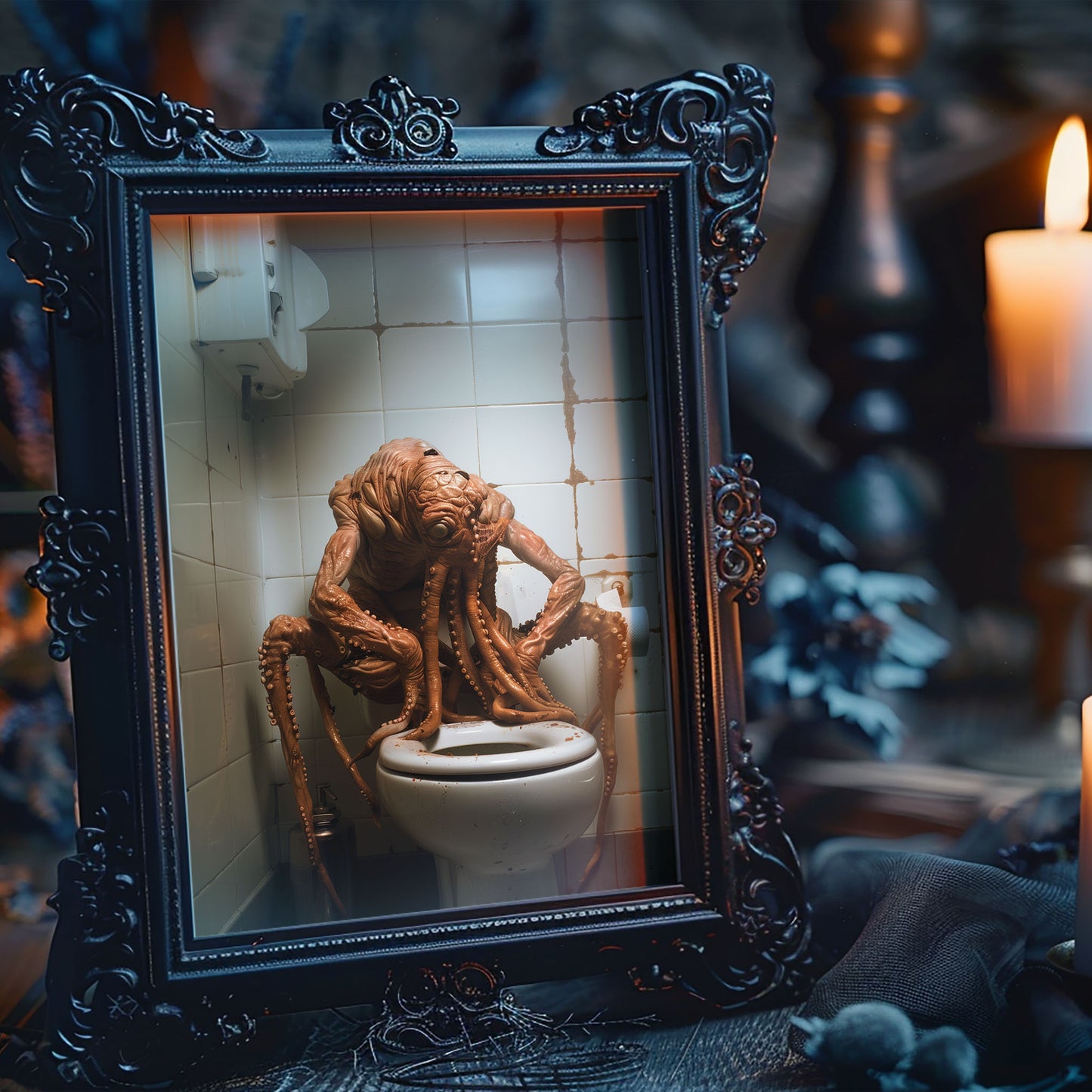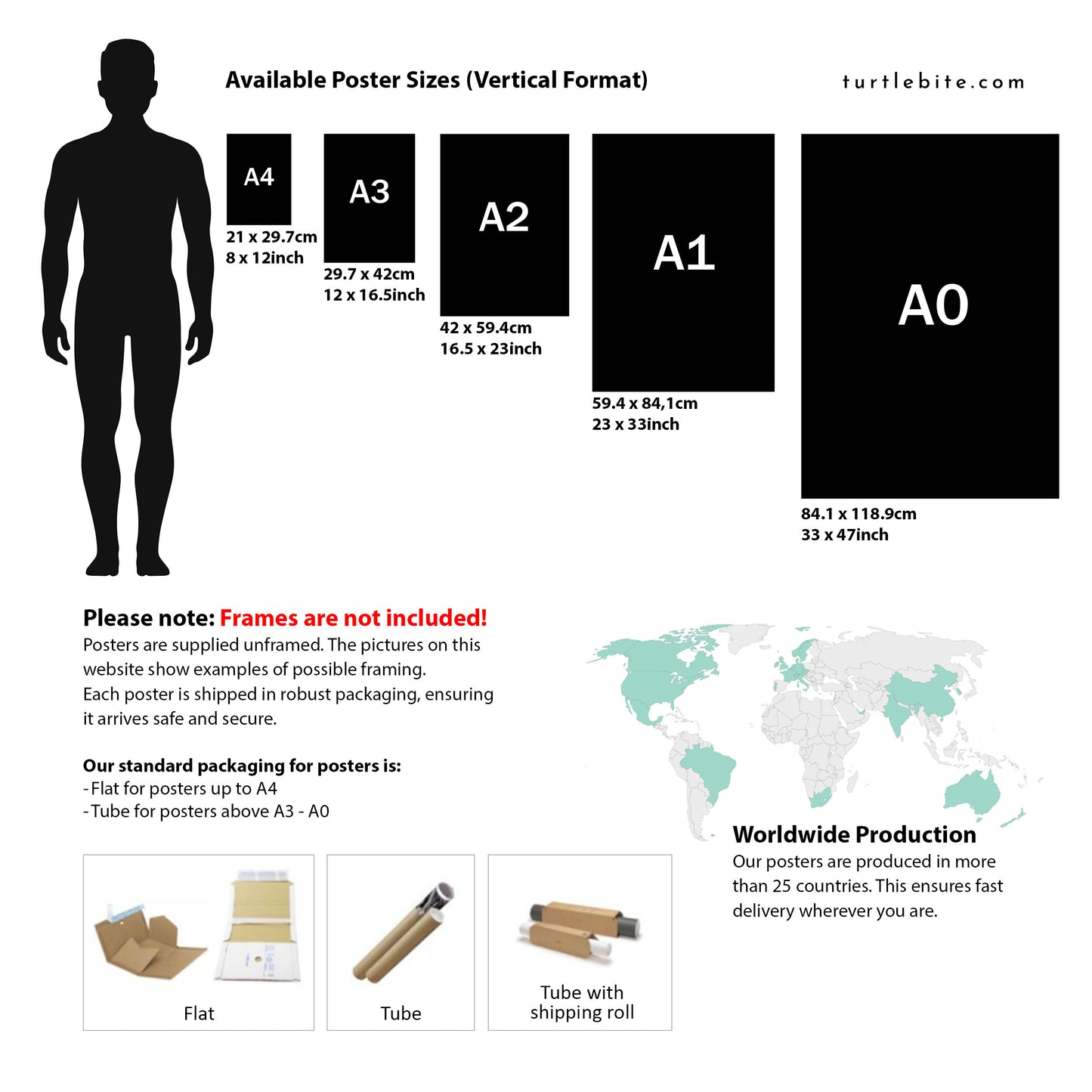
The Lonely Tentacle: A Surreal Look at a Sad Octopus Monster on a Toilet
ChristianShare
When Surrealism Meets Existential Horror
In the domain of digital art and visual storytelling, few images command attention like this eerie, emotional portrayal of a sad octopus-like monster hunched over a toilet. Equal parts grotesque and heartbreaking, this scene transcends mere shock value, inviting viewers into a deeper exploration of mood, metaphor, and meaning. Today, we unravel the intricate artistry and emotional depth behind this unsettling image.
Composition & Framing: A Symmetrical Cage
The creature is centered in a narrow, enclosed bathroom space, framed tightly by dingy white tiles. The square-tiled walls form a prison-like symmetry that emphasizes confinement. The creature’s limbs sprawl out asymmetrically in contrast, introducing a chaotic organic element to the sterile, linear space. This deliberate clash of geometry and wild biology serves as a visual metaphor for feeling out of place in one’s environment.
The lighting spotlights the creature while casting subtle shadows on the glossy tiles, reinforcing the subject's centrality. The toilet becomes a bizarre throne of despair, the center around which all elements orbit.
Creature Design: An Octopoid Symbol of Suffering
The central figure, a hybrid between an octopus and a humanoid mutant, is meticulously detailed with moist, glistening textures. Its rubbery, cephalopod limbs curl inwards in an almost fetal gesture, suggesting vulnerability rather than aggression. The eye, bulging and glistening, stares blankly forward - perhaps a window into its hollowed psyche.
This creature, with its wrinkled flesh and exhausted pose, may evoke pathos more than fear. The design draws from Lovecraftian horror but turns the trope on its head, giving the monster not menace, but melancholy.
Its posture, slumped and hunched, conjures human associations with depression, stomach sickness, or emotional defeat. This creates a tension between the alien and the familiar, enhancing the surreal horror of the image.
Color and Texture: The Gross Palette of Despair
The palette leans into fleshy browns, reds, and muted whites - colors that suggest decay, disease, and discomfort. The creature’s skin is a raw, reddish-pink, while the bathroom tiles and toilet are dulled whites smeared with brown stains. These colors evoke an unclean, unwell feeling, enhancing the image’s visceral impact.
The textures, from the sticky sheen on the tentacles to the crusted grime on the walls, are hyperrealistic. The almost tactile quality makes the scene feel close, uncomfortable, and unavoidable - intensifying the viewer’s emotional and physical response.
Environment: A Bathroom of Existential Dread
Bathrooms are spaces of vulnerability. Here, this one is transformed into a dungeon of despair. The grime-streaked tiles and faint overhead lighting strip away any sense of comfort or privacy. It is a place of exposure, not relief.
The dispenser on the wall, the stained floor, the misused toilet - all point toward a long-abandoned or neglected space. The decay surrounding the creature suggests that it, too, has been forgotten.
The juxtaposition of the mundane (a public bathroom) with the monstrous emphasizes absurdity, prompting questions about how and why this being ended up in such a setting.
Emotional Tone: Alienation and Sad Absurdity
At the heart of the image is a profound loneliness. The creature, though fantastical, expresses all-too-human emotions. Its blank stare and lifeless limbs suggest exhaustion - not just physical, but emotional and perhaps existential. This could be a visual metaphor for chronic illness, depression, or the slow grind of a meaningless routine.
There’s also absurdity here. A cosmic horror creature, typically relegated to the depths of the sea or vast galaxies, is now grounded by something as banal as a toilet. The irony creates a strange mix of humor and tragedy, akin to the works of Kafka or Beckett.
Artistic Style & Influences: Grotesque Surrealism with Digital Precision
The image draws from traditions of grotesque surrealism - think Zdzisław Beksiński meets H.R. Giger - but is executed with clean digital sharpness. It likely combines 3D modeling with photo-texture overlays, achieving hyperrealism in an impossible setting.
Influences also seem to include body horror cinema and video game aesthetics, blending monstrous anatomy with high-fidelity environmental rendering. This synthesis grounds the absurdity in visual believability, making it all the more striking.
Interpretation: What Does It All Mean?
This could be a commentary on feeling alien in familiar spaces, on being reduced to bodily functions, or even on the grotesqueness of modern life. The creature is a metaphor for anyone who has ever sat on a toilet and contemplated the absurdity of existence.
Or perhaps it's just a monster who had a bad lunch. Either way, the image leaves an impression - and that's the hallmark of powerful art.
Final Thoughts
This image doesn’t just shock - it lingers. It captures the surreal intersection of humor, horror, and humanity in a single frame. Whether you're drawn to it for the grotesque artistry or the emotional undertones, it demands attention and contemplation. It’s a meme, a mood, and maybe even a mirror.

